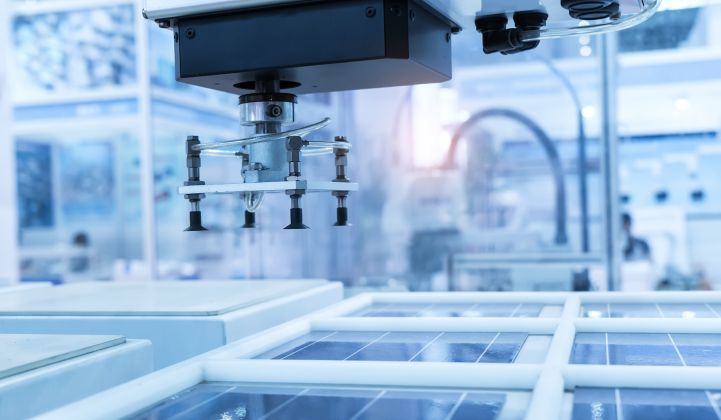Can the silicon-based, mostly Chinese solar module industry maintain its reliability, given the constant declines in component and system costs? Current solar module pricing at 30 or 40 cents per watt might not leave a lot of room for building in reliability.
DNV GL's PV Module Reliability Scorecard gathers reliability test data from its lab on a large group of panel manufacturers. The lab has been testing solar modules for more than six years and has reams of historical data to compare performance among vendors. (The report is available for free download here.)
Here's a chart that illustrates the report's somewhat counterintuitive findings on performance degradation after 600 thermal cycles. The top 10 manufacturers are shown in red.

One can't assume that the big manufacturers make the highest-quality products.
The top 10 module suppliers according to PV Tech are:
- Jinko
- Trina
- Canadian Solar
- Hanwha Q Cells
- JA Solar
- GCL
- First Solar
- Yingli
- Talesun
- Risen
Here are the top performers for 2017, according to the report.

Top 10 module manufacturers that are not on the top-performer list -- either because they did not make the grade or because they did not participate -- include Canadian Solar, JA Solar and Risen. GTM has asked those vendors whether they submitted test samples.
The reliability of modules is absolutely impacted by the raw materials that are selected. The report observes that the same module with the same module number can exhibit vastly different performance characteristics based on a different bill of materials.
"PV module aging and failure mechanisms seen over the past several decades have been documented over a wide range of power plant locations and material sets. Field failures of PV equipment can stem from material issues, fundamental product design flaws, or failures in quality control during the manufacturing process," note the authors of the report.
The figure below indicates the leading PV module aging and failure mechanisms that occur as infant mortalities, midlife failures, and wear-out failures.

Source: IEA PVPS 2014
Jenya Meydbray, vice president for strategy and business development at DNV GL, makes the following additional observations:
- Kyocera is the only vendor that has ranked on the top performer list every year.
- He suggests that it takes "a ton of sophistication" to make high-quality modules at 30 to 35 cent-per-watt prices.
- Trina seems to be one of the most consistent high-quality producers -- its technology was featured as a top performer on most tests in 2014, most tests in 2016 and every test in 2017.
- Jinko distinguished itself in some tests in 2014, most in 2016 and all in 2017. That company has shown consistent improvement across the board.
In the race to maintain cost parity, vendors cannot sacrifice quality and reliability. This report series is a good place to watch that process play out.
Editor's note: This article originally stated that Kyocera had exited the U.S. market. That was incorrect. "We have transferred operation of the North American business to our offices in Japan and are continuing to carry out sales to the region directly from Japan," said a company representative.



